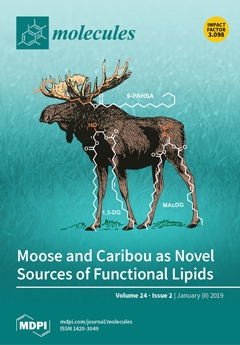Xanthium strumarium L. (Asteraceae) is a common and well-known traditional Chinese herbal medicine usually named Cang-Er-Zi, and has been used for thousands of years in China. The purpose of this paper is to summarize the progress of modern research, and provide a systematic review on the traditional usages, botany, phytochemistry, pharmacology, pharmacokinetics, and toxicology of the
X. strumarium. Moreover, an in-depth discussion of some valuable issues and possible development for future research on this plant is also given.
X. strumarium, as a traditional herbal medicine, has been extensively applied to treat many diseases, such as rhinitis, nasal sinusitis, headache, gastric ulcer, urticaria, rheumatism bacterial, fungal infections and arthritis. Up to now, more than 170 chemical constituents have been isolated and identified from
X. strumarium, including sesquiterpenoids, phenylpropenoids, lignanoids, coumarins, steroids, glycosides, flavonoids, thiazides, anthraquinones, naphthoquinones and other compounds. Modern research shows that the extracts and compounds from
X. strumarium possess wide-ranging pharmacological effects, including anti- allergic rhinitis (AR) effects, anti-tumor effects, anti-inflammatory and analgesic effects, insecticide and antiparasitic effects, antioxidant effects, antibacterial and antifungal effects, antidiabetic effects, antilipidemic effects and antiviral effects. However, further research should focus on investigating bioactive compounds and demonstrate the mechanism of its detoxification, and more reasonable quality control standards for
X. strumarium should also be established.
Full article






